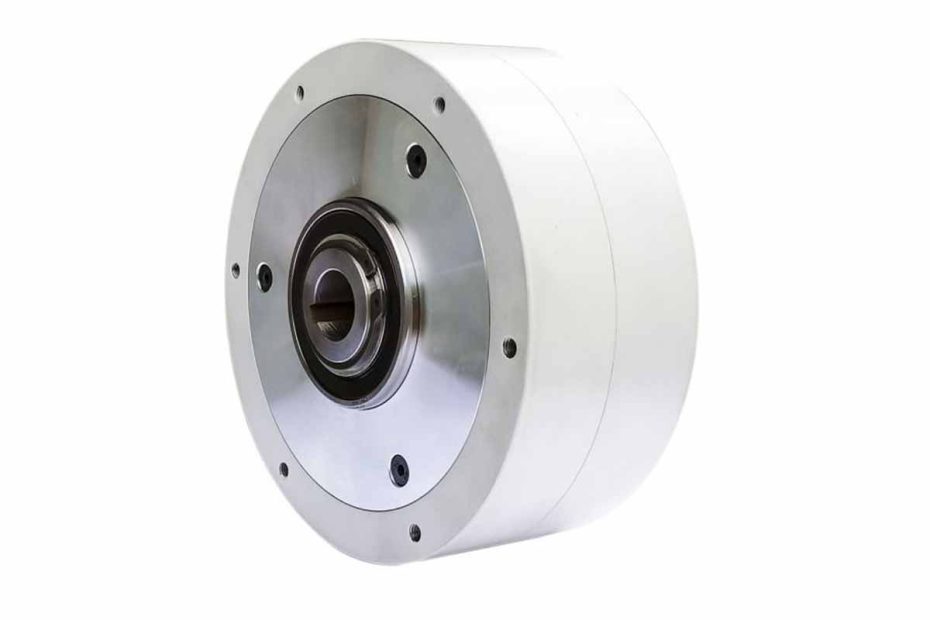In the world of mechanical engineering and industrial applications, braking systems play a crucial role in controlling the motion of machinery. Among the various types of brakes available, magnetic particle brakes stand out for their efficiency, reliability, and versatility. Understanding the main components of a magnetic particle brake system is essential for grasping its functionality and potential applications.
Components Overview
- Stator Assembly:The stator assembly serves as the stationary part of the magnetic particle brake system. It typically consists of a housing, coils, and pole shoes. The housing provides structural support and protection for the internal components. Coils wound around the housing generate a magnetic field when energized, while pole shoes concentrate and direct the magnetic flux toward the rotor assembly.
- Rotor Assembly:Opposite to the stator, the rotor assembly is the moving component of the magnetic particle brake system. It usually comprises a rotor shaft and a series of magnetic particles enclosed within a housing or drum. As the stator generates a magnetic field, the magnetic particles in the rotor respond to the flux, causing the rotor to engage or disengage, thereby controlling the output torque.
- Input Shaft:The input shaft serves as the interface between the prime mover and the magnetic particle brake. It transfers rotational motion from the driving source, such as an electric motor or engine, to the brake assembly. The input shaft may feature keyways, splines, or other connection methods to ensure a secure attachment to the brake.
- Output Shaft:Similarly, the output shaft transmits the controlled motion from the magnetic particle brake to the load or driven machinery. It may connect to the brake through splines, flanges, or other coupling mechanisms. The design of the output shaft depends on the specific application requirements, including torque transmission and alignment considerations.
Main Components Detailed
- Magnetic Particle Chamber:At the heart of the magnetic particle brake system lies the magnetic particle chamber. This chamber houses the magnetic particles suspended in a carrier fluid, typically oil or water. The arrangement of the particles within the chamber determines the brake’s torque transmission characteristics. Controlling the magnetic field strength alters the alignment and density of the particles, thereby modulating the brake’s torque output.
- Sliding Armature:The sliding armature is a crucial component that connects the rotor assembly to the load or driven machinery. It transfers the braking force generated by the magnetic field to the output shaft, enabling precise control over the rotational motion. The sliding armature may feature friction materials or wear-resistant coatings to enhance durability and reduce maintenance requirements.
- Cooling System:To ensure optimal performance and prevent overheating, magnetic particle brake systems often incorporate a cooling system. This system may include cooling fins, fans, or circulation channels to dissipate heat generated during braking operation. Proper cooling helps maintain consistent braking performance and prolongs the lifespan of the brake components.
- Control Electronics:Modern magnetic particle brake systems are typically equipped with sophisticated control electronics for precise torque regulation and system monitoring. These electronics include microcontrollers, sensors, and feedback mechanisms to adjust the magnetic field strength based on real-time operating conditions. Advanced control algorithms allow for smooth, responsive braking action and protection against overloads or faults.

Application Examples
- Industrial Machinery:Magnetic particle brake systems find widespread use in various industrial machinery applications, including printing presses, wire winding machines, and tension control systems. By precisely controlling torque output, these brakes ensure accurate speed regulation and tension control, essential for high-quality production processes.
- Automotive Testing:In automotive testing and research applications, magnetic particle brake systems play a vital role in dynamometer setups and vehicle component testing. By simulating road load conditions, these brakes enable accurate performance evaluation of engines, transmissions, and drivetrain components under controlled laboratory conditions.
- Medical Devices:In medical equipment such as MRI machines and diagnostic imaging devices, magnetic particle brakes help regulate the motion of rotating components with precision and reliability. By providing smooth and consistent braking action, these brakes contribute to the safety and accuracy of medical procedures.
Conclusion
In conclusion, the main components of a magnetic particle brake system work together to provide precise and reliable control over rotational motion. From the stator assembly generating the magnetic field to the rotor assembly responding with controlled torque output, each component plays a crucial role in the brake’s operation. Understanding these components and their functions is essential for designing and implementing magnetic particle brake systems in various industrial and technological applications. With their versatility and efficiency, magnetic particle brakes continue to be a preferred choice for motion control in diverse fields.
